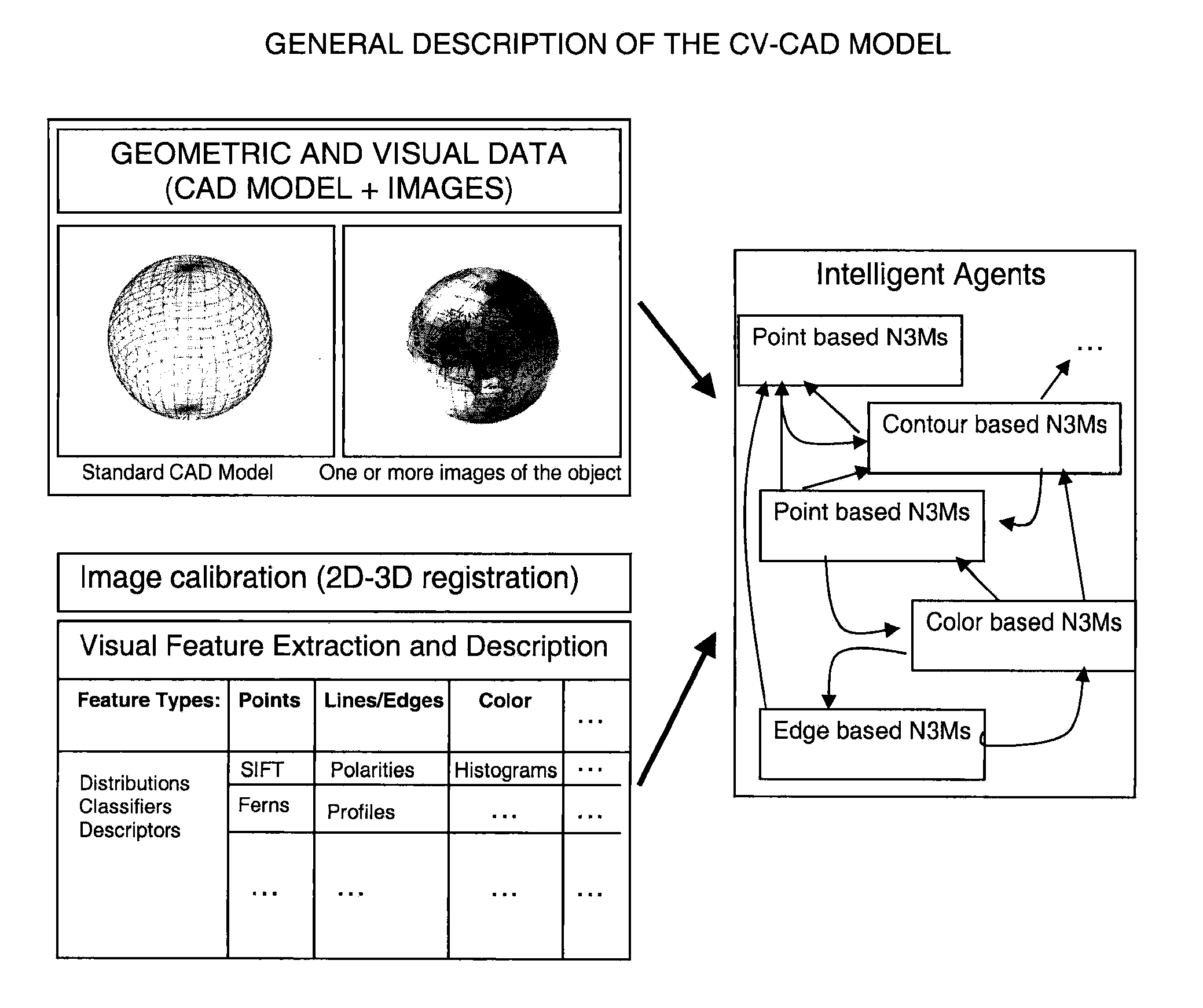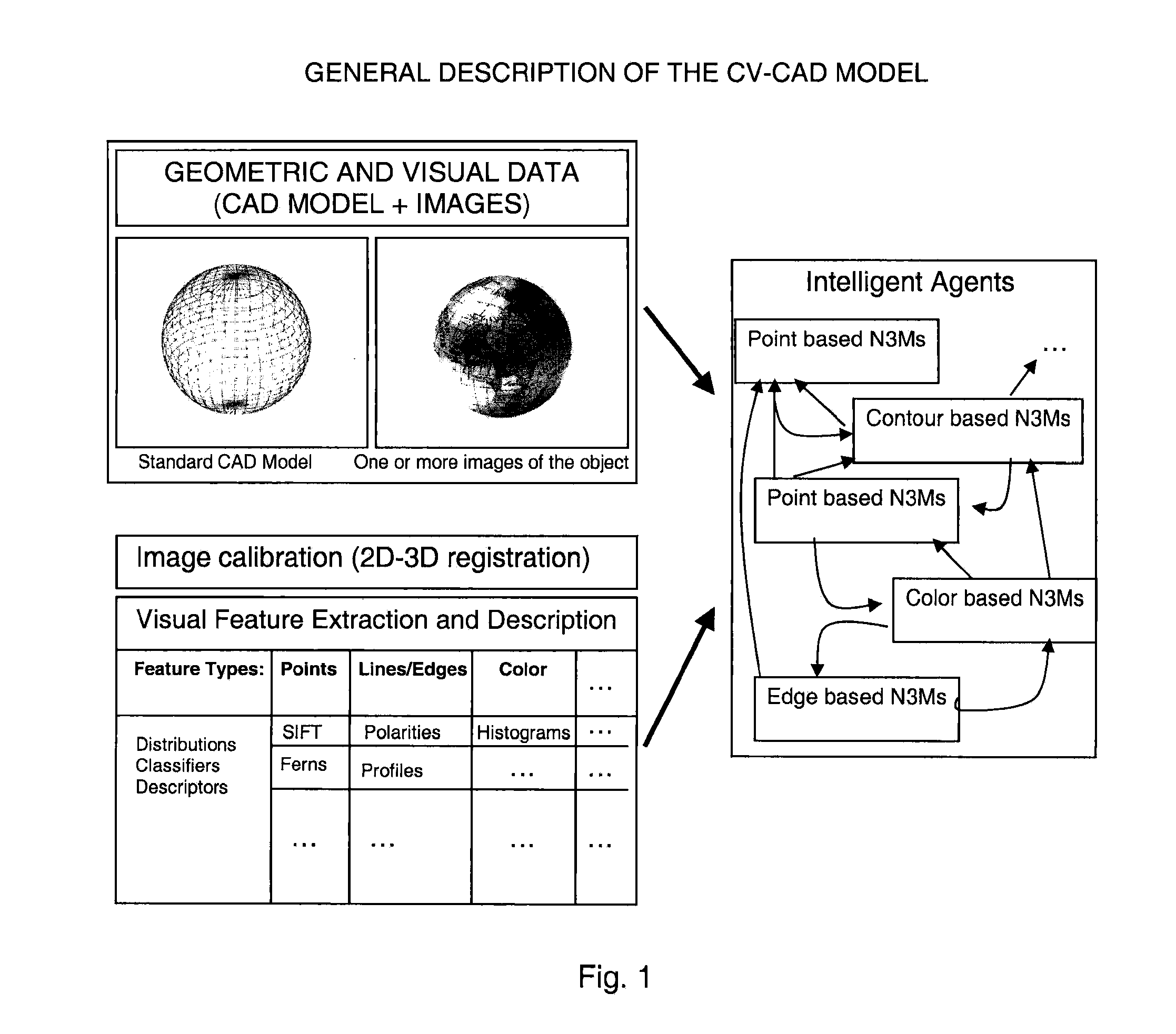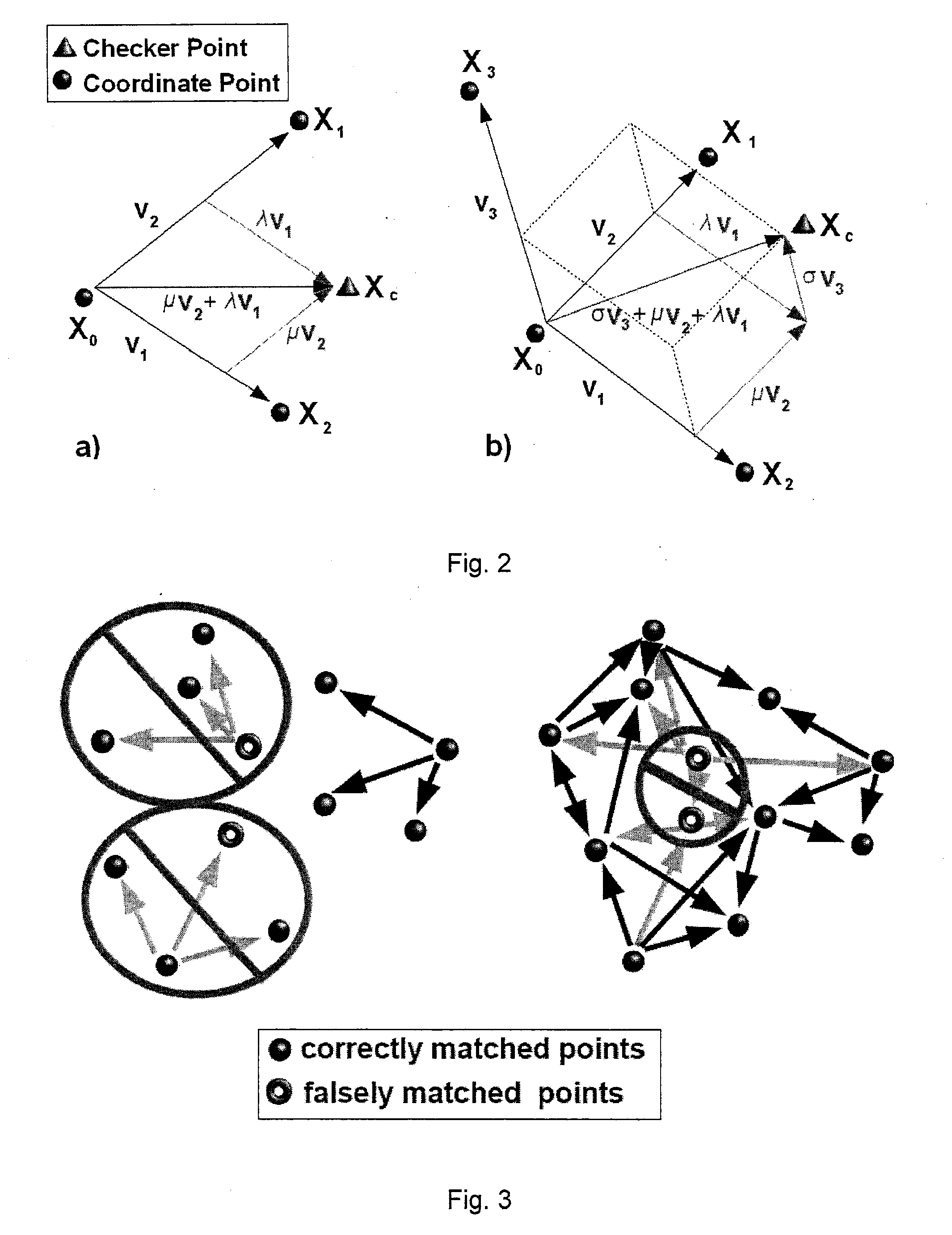Computer vision cad models
a computer vision and cad model technology, applied in the field of computer vision cad models, can solve the problems of not being able to use other objects in engineering steps, unable to use marker-less vision-based applications in industrial environments, and not being able to generalize most engineering steps
- Summary
- Abstract
- Description
- Claims
- Application Information
AI Technical Summary
Benefits of technology
Problems solved by technology
Method used
Image
Examples
Embodiment Construction
[0039]In the first step, a CAD model of an object must be textured. For instance, this can be done by registering images of the object with the CAD model, e.g., with the method described in [18]. If a textured CAD model is already available, the first step does not need to be performed. In a second step, for each part of the textured CAD model the optimal computer vision features are trained. Optimal means that the computer vision features extracted and computed for the single parts are the most robust and stable features for object recognition and pose estimation. In the training step, different other aspects of computer vision, like, e.g., self-occlusion of the object, different lighting conditions, appearance and viewpoint changes of the object parts, etc., can be considered as well.
[0040]Computer vision features can be split into detectors, like points, corners, segments, lines, edge profiles, colors, texture, contours, and the like, and descriptors, like SIFT, Randomized Trees,...
PUM
 Login to View More
Login to View More Abstract
Description
Claims
Application Information
 Login to View More
Login to View More - R&D
- Intellectual Property
- Life Sciences
- Materials
- Tech Scout
- Unparalleled Data Quality
- Higher Quality Content
- 60% Fewer Hallucinations
Browse by: Latest US Patents, China's latest patents, Technical Efficacy Thesaurus, Application Domain, Technology Topic, Popular Technical Reports.
© 2025 PatSnap. All rights reserved.Legal|Privacy policy|Modern Slavery Act Transparency Statement|Sitemap|About US| Contact US: help@patsnap.com



